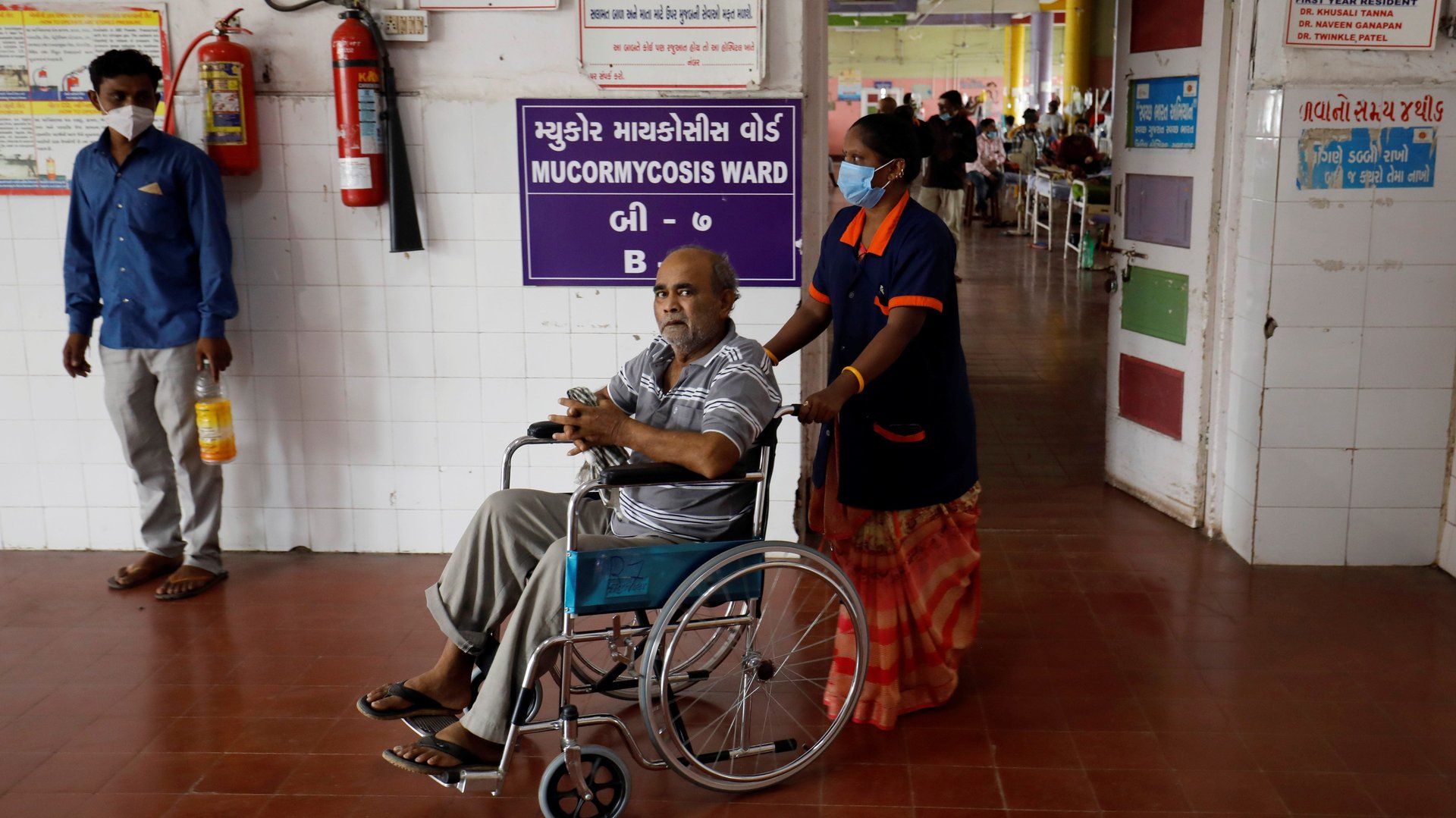India’s black fungus epidemic can now be linked to cow dung fires
Cow dung fires, a common practice in various regions in India, may have acted as a vehicle for India’s mucormycosis epidemic of 2021, a new study now suggests.


Cow dung fires, a common practice in various regions in India, may have acted as a vehicle for India’s mucormycosis epidemic of 2021, a new study now suggests.
The paper, authored by Houston-based independent researcher Jessy Skaria, among others, and published in mBio on March 31, put forth the theory that “mucorales-rich cow excrement, given its use in multiple Indian rituals and practices, especially during the pandemic, probably played a key role in India’s covid-19- associated mucormycosis epidemic.”
In April 2021, while India was battling the devastating second wave of covid-19, it was also hit by infections of black fungus, the colloquial term for mucormycosis. Such infections carried a mortality rate of up to 50%, and were being seen in patients recovering from covid-19. In May 2021, the government designated it an epidemic. By the end of last November, nearly 52,000 cases of the disease had been recorded in the country.
There were several possible explanations for the outbreak floated at the time: the high incidence of diabetes, making patients more susceptible to fungal infections, the improper use of steroids to counter delta variant symptoms, and the use of unsterilised oxygen cylinders at home.
None of these could be directly tied to mucormycosis, science news publication SciDev reported on April 4.
This new hypothesis is the first step toward a plausible explanation.
Cow dung fires could cause black fungus
Skaria focuses on environmental factors specific to India to understand why, even leaving aside the pandemic, it reports so many of these cases—140 per million population, which is 80 times higher than the developed world.
The focus on cow dung fires stems from the fact that mucormycosis spreads through the environment. Studying its prevalence pattern has now led researchers to links between cattle-rearing traditions and fungal infections.
For instance, Skaria’s research suggests that in states like Kerala and West Bengal, where cow dung is rarely used as fuel in homes and the slaughtering of cattle is not banned, the number of mucormycosis cases was far fewer. This is despite Kerala reporting the highest number of covid-19 infections and also the highest diabetes prevalence in the country.
“That the CAM (covid-19-associated mucormycosis) epidemic occurred shortly after major Hindu religious festivals is also unlikely to be a coincidence,” the researchers said. Festivals like the Kumbh Mela and Holi may have contributed to the spread of mucormycosis through the use of unpurified water.
This, alongside the use of untested remedies for covid-19, proved to be a perfect cocktail for mucormycosis to thrive.